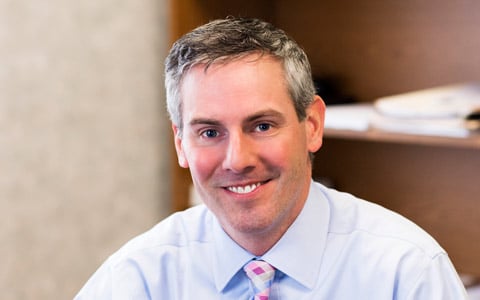
Michael Petrin is a leading voice in western Massachusetts and Connecticut’s land development market with 25 years of experience in civil and site engineering. As Land Development Team Leader in Springfield, MA, he brings a forward-thinking perspective to development initiatives ranging from site and roadway projects to stormwater management systems. His experience with both private and public clients gives him a valuable perspective on the intersection of land development and net-zero mobility goals, which are driven largely by state regulatory requirements. This article shares insights from a recent interview with Michael, with a focus on reaching net-zero goals from a land development perspective.
VHB: What net-zero mobility initiatives are currently underway from a public land development outlook?
Michael: Right now, the majority of my work associated with net-zero mobility are all transit projects. Per state mandates, all or most of transit bus fleets need to be electrified by 2035 for Massachusetts and 2030 for Connecticut. We are currently working with the Wendel Companies, CTtransit, and the Pioneer Valley Transit Authority to upgrade bus maintenance and storage facilities so they can accommodate these electric buses and the required charging equipment.
VHB: What is the biggest challenge when it comes to upgrading these bus storage facilities?
Michael: The biggest challenge we’re facing right now is that these buildings are functioning at a much larger capacity than what they were originally designed for over 40 years ago. The issue is not just modifying the buildings but finding the space for the electrical infrastructure that these buses require. In addition, the fire codes for these buildings have not caught up to the bus electrification mandates. The buildings’ water infrastructure needs to be upgraded and improved to avoid thermal fires caused by the buses’ electric charging equipment.
VHB: How does climate change resiliency factor in?
Michael: As an example, one of the facilities we are working on is adjacent to a floodplain. We need to make certain that the electrical equipment is raised and stored far away enough from the floodplain to avoid damage from flooding, for which we’re at higher risk now due to the increase in the frequency and intensity of storm events.
VHB: Is your team incorporating new technologies or approaches into this work?
Michael: We have talked to our partners at the Wendel companies about using our 3D scanning capabilities inside the existing buildings. Right now, they are creating the building models from record drawings. VHB has the technology to implement 3D imaging to pick up every conduit and display the entire layout of a building, which would improve efficiency and accuracy of the building model.
VHB: So, what does the future look like and how can VHB help?
Michael: We expect that there will be rapid advancements in charging technologies for electric buses. VHB can stay ahead of the curve on these advancements by remaining in close contact with transit agencies and making certain that they are aware of our land development experience. The charging technology is quickly changing and nothing is standardized yet, so it’s important that we understand transit agencies’ preferences and that we can pivot and help them upgrade swiftly.
Learn more about VHB’s Land Development services by emailing Michael and connecting on LinkedIn.


